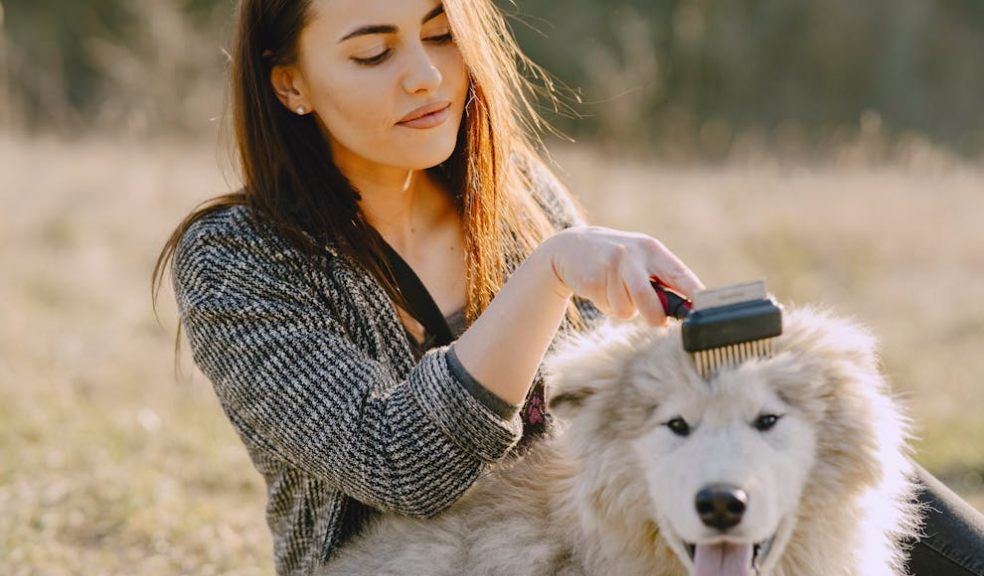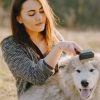
Tips for Keeping Your Dog’s Coat Well-Groomed
A well-groomed dog is not only a pleasure to be around but also a healthy and happy one. Regular grooming is essential for maintaining your dog's coat, skin, and overall well-being. Whether your dog has long, short, curly, or straight fur, understanding the best tools and practices for keeping their coat in top shape can make a significant difference. One essential tool for home grooming is the Oneisall clipper, known for its versatility and ease of use. With the right grooming techniques and equipment, like the Oneisall clipper, you can ensure your dog looks and feels their best while keeping their coat healthy and shiny.
The Importance of Regular Grooming
Regular grooming is more than just a cosmetic practice; it is vital for your dog’s health. Dogs naturally shed hair, and without proper grooming, this loose fur can become matted, leading to skin irritations or infections. Additionally, regular grooming helps in the early detection of potential health issues such as lumps, ticks, or unusual skin conditions.
Grooming also plays a crucial role in your dog's comfort. A well-maintained coat prevents the dog from feeling itchy or uncomfortable, especially in warmer weather. Moreover, grooming sessions provide an excellent opportunity for bonding between you and your pet. Regularly brushing and trimming your dog's coat helps build trust and strengthens your relationship.
Essential Grooming Tools
To keep your dog’s coat in the best condition, you’ll need the right tools. Here’s a list of essential grooming tools that every dog owner should have:
- Brushes and Combs: Depending on your dog's coat type, you might need a slicker brush, a pin brush, or a bristle brush. For dogs with long fur, a wide-toothed comb can help detangle knots and mats.
- Dog Hair Trimmer: A dog hair trimmer is invaluable for keeping your dog’s coat at a manageable length, especially for breeds with fast-growing fur. It allows for precise trimming around sensitive areas like the face, paws, and tail.
- Nail Clippers: Overgrown nails can cause discomfort and even lead to joint issues. Regularly trimming your dog's nails is an essential part of the grooming routine.
- Shampoo and Conditioner: Choose a dog-friendly shampoo and conditioner that suits your pet’s skin and coat type. Avoid using human products, as they can be too harsh for your dog’s skin.
- Ear Cleaning Solution: Regularly cleaning your dog’s ears can prevent infections. Make sure to use a solution specifically designed for dogs.
Brushing Your Dog’s Coat
Brushing is a fundamental aspect of grooming that should be done regularly, depending on your dog's coat type. For instance:
- Short-haired dogs: They require brushing once or twice a week. A bristle brush works well to remove loose fur and distribute natural oils.
- Long-haired dogs: These breeds need daily brushing to prevent mats and tangles. Use a pin brush to gently detangle the fur and a slicker brush to remove loose hair.
- Curly or wavy-coated dogs: These dogs need frequent brushing, often daily, to keep their coat free from mats. A slicker brush is ideal for this type of fur.
Brushing not only keeps the coat smooth and shiny but also stimulates the skin, promoting healthy hair growth. It’s also an excellent way to check for any abnormalities on your dog’s skin, such as lumps or parasites.
Bathing Your Dog
Bathing your dog is another crucial aspect of grooming, but it should be done with care. Over-bathing can strip the natural oils from your dog's skin, leading to dryness and irritation. Typically, dogs should be bathed every 4 to 6 weeks, but this can vary depending on their breed, lifestyle, and skin condition.
Use lukewarm water and apply a dog-specific shampoo. Work the shampoo into the coat, starting from the neck and moving towards the tail, avoiding the eyes and ears. Rinse thoroughly to ensure no residue is left behind, as this can cause irritation. After the bath, gently towel-dry your dog and, if necessary, use a dog-friendly blow dryer on a low setting to completely dry the coat.
Trimming and Clipping
For many dog breeds, regular trimming is necessary to keep the coat neat and healthy. This is where a dog hair trimmer becomes an essential tool. Trimming helps in:
- Preventing mats: Regular trimming keeps the fur at a manageable length, reducing the likelihood of mats, especially in areas like the belly, legs, and tail.
- Maintaining comfort: Dogs with overgrown fur can become uncomfortable, particularly in warm weather. Keeping the coat trimmed allows for better air circulation, keeping your dog cool.
- Enhancing appearance: A well-trimmed coat improves your dog’s overall appearance, giving them a clean and well-maintained look.
When using a dog hair trimmer, ensure that you are familiar with its operation. Start with a slow speed, and gently trim the fur, paying extra attention to sensitive areas like the face, paws, and underarms. If you’re unsure about trimming your dog’s coat yourself, consider taking them to a professional groomer.
Keeping the Skin Healthy
A well-groomed coat starts with healthy skin. Ensure your dog’s skin stays healthy by:
- Maintaining a balanced diet: A nutritious diet rich in Omega-3 and Omega-6 fatty acids can help promote healthy skin and a shiny coat.
- Regular hydration: Ensure your dog always has access to fresh water. Hydration is key to maintaining supple skin and a healthy coat.
- Checking for parasites: Regularly check your dog for fleas, ticks, and other parasites that can cause skin irritations. If you find any, treat your dog promptly with an appropriate flea and tick prevention product.
Regular Grooming Schedule
Establishing a regular grooming schedule is crucial for maintaining your dog’s coat. Depending on your dog’s breed and coat type, you might need to adjust the frequency of grooming activities such as brushing, bathing, and trimming. Here’s a basic guideline:
- Daily: Brush your dog’s coat, check for any signs of skin irritation, and clean their ears if necessary.
- Weekly: Trim your dog’s nails, brush their teeth, and give them a thorough check for parasites.
- Monthly: Bathe your dog, trim their fur using a dog hair trimmer, and apply flea and tick prevention treatment.
By sticking to a regular grooming routine, you’ll ensure that your dog’s coat remains healthy and their overall well-being is maintained.
Conclusion
Grooming is an integral part of responsible pet ownership. It not only keeps your dog looking their best but also plays a crucial role in their overall health and happiness. From brushing and bathing to trimming with a dog hair trimmer, each step contributes to a well-maintained coat and a happy, healthy dog. By dedicating time to regular grooming, you can strengthen the bond with your pet and ensure they stay comfortable and content. Remember, a well-groomed dog is a happy dog!













